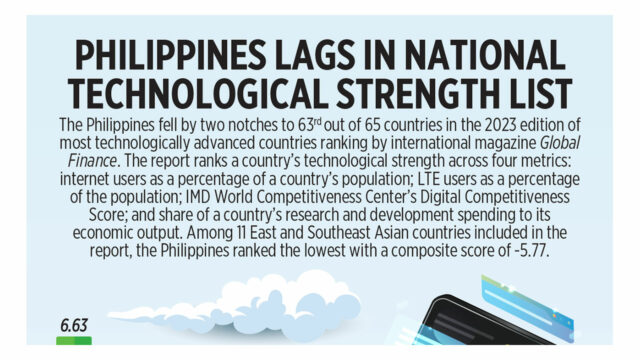The fisheries sector has always contributed a measly share of our gross national product (GDP). About 4% of our workforce is engaged in it but contributes only 1.3% to our GDP. On average, the per capita GDP of the fish-eries sector is about 1/3 the national average. This is ironic because we are an archipelagic country and food from the sea contributes 50% of our protein nutrition. Typically, those who produce our food are the poorest among our people.
During the past decade, fish stocks have declined by 20% due to overexploitation, destructive fishing methods (such as dynamiting), and habitat degradation. Harassment by Chinese fishing vessels and their destruction of corals in their construction of military bases in the West Philippine Sea have exacerbated the decline.
Last year, the World Bank announced that its Executive Board had approved $167 million for FISHCORE, a project that is intended to enhance the productivity of the fisheries sector and help reduce poverty in two of the 12 Fisheries Management Areas (FMAs) identified by the Bureau of Fisheries and Aquatic Resources (BFAR) of the Department of Agriculture. The money translates to P10 billion, or about P5 billion for each FMA. These pilot pro-jects consist of one on the northwest coast of Luzon, and another in the archipelagic areas in southern Visayas and northern Mindanao.
The intentions for FISHCORE are laudable; but as is often the case, will it be implemented effectively?
There are many obstacles and constraints that will make it difficult. For one thing, under the Local Government Code of 1991, agriculture has been devolved to the local government units (LGUs). Will BFAR be able to work effectively with the LGUs?
One of the major problems is corruption among LGU politicians who allow illegal fishing by trawlers in municipal waters which are reserved for local fishers. Trawlers drag nets that comb the seafloor, catching all sorts of fish including juveniles. A Bantay Dagat leader in northern Cebu told me once that when he tried to board one such ship to tell them not to fish in their waters, he was met by a gun.
At the turn of the millennium, Malcolm Sarmiento was BFAR director. During his term, fisheries production grew from year to year. Sarmiento worked hard to promote marine sanctuaries, aquaculture, and value-adding (such as the commercial production of sardines in his home province of Zamboanga).
I grew up in the coastal areas of Leyte and Samar. My dad had eloped with my mom when they were teenagers, so my grandpa hired him to be the manager of a sawmill in Tacloban which happened to be right across a beach. So, my resourceful father became a fisherman on the side. He built a couple of fish pens and even learned to caulk a banca (outrigger) and to mend a fishnet.
When the war with Japan broke out, we never starved because he produced and sold dried fish. Whenever the peace siren sounded, people flocked to our sawmill to buy dried fish! My young mother raised chickens and vegetables in our backyard.
When I was just starting school, I was sent during summer breaks to Calbayog, Samar where we had relatives who had small kids like me. I enjoyed fishing with them at the makeshift harbor. Papa also had a few pump boats that plied the Leyte and Samar route. So, I am familiar with the sight of large bins full of freshly caught fish which were loaded on our boats.
I once met the leader of a fishermen’s cooperative in Western Samar. He told me that after three years when they disciplined themselves by protecting a marine sanctuary and stopping dynamite fishing, their production of fish was substantial. Their cooperative’s members were very happy, after several years of low productivity.
My maid’s husband from Northern Samar — who was little schooled, if at all — confessed to me once that he used to do dynamite fishing until he attended a “seminar” and learned how destructive it was to productivity of their municipal waters.
One of my development management students did a stud y on a fishing community in Bataan which was living below the poverty line. During the rainy season, they had to sell their extra catch at low prices because they could not dry them. By organizing them into a coop, and getting them a loan for a mechanical drier, she demonstrated that they could rise above the poverty line.
Getting Filipinos organized into cooperatives is not an easy task. This is one of the challenges that FISHCORE will need to deal with.
The BARMM in Muslim Mindanao is a large producer of seaweed, which is considered a part of fisheries. Perhaps this sector can be expanded and brought into value-adding technologies.
Let us hope FISHCORE is successful in the pilot areas and is able to expand into other FMAs. It will help so many of our food producers overcome their undeserved poverty. The Secretary of Agriculture is a fishing mag-nate. Perhaps he can be more attentive to fisheries than other secretaries who have been so focused on plant life.
Teresa S. Abesamis is a former professor at the Asian Institute of Management and Fellow of the Development Academy of the Philippines.
tsabesamis0114@yahoo.com













